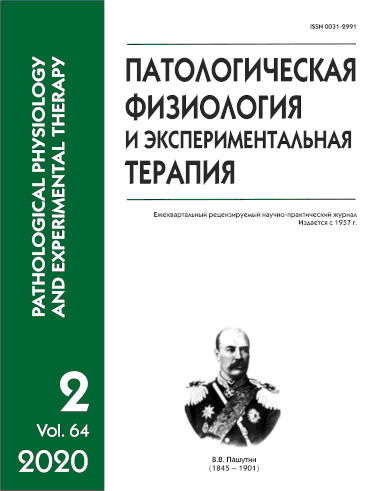Hepatic blood flow and oxygen tension in different types of liver damage and hyperoxia
Abstract
The aim of study was to investigate hepatic blood flow and oxygen tension in mechanical, chemical, and combined injury of the liver and during a course of hyperbaric oxygenation (HBO). Methods. Experiments were performed on 143 white female rats weighing 180-220 g. Mechanical injury of the liver was modeled with partial hepatectomy (PHE) by removing a part of the left hepatic lobe (HL) (15-20% of liver weight). Chemical injury was modeled by subcutaneous injection of 50% ССl4 in olive oil (0.1 ml/100 g). Injections were performed every second day for 65 days. For the combined injury, PHE followed by HBO (3 ATA, 50 min) was performed on day 65 (last day) of ССl4 administration. HBO was applied three times, at 4-8, 24, and 48 hours after PHE. Hepatic blood flow was studied using hydrogen clearance in the operated, left HL (LHL) and in one of unoperated, middle HL (MHL). Hepatic oxygen tension (рО2) was evaluated by polarography with a platinum electrode; data were corrected for the temperature coefficient. Studies were performed on postoperative days 3, 7 and 14 (posthyperoxia days 1, 4, and 11). Results. In normal animals, PHE stimulated blood flow in both studied hepatic lobes and decreased рО2 only in the remaining LHL on postoperative days 3 and 7. On day 65 of ССl4 administration, blood flow was reduced by 42% and 39%, respectively, in remaining LHL and MHL while рО2 was reduced by 50%. These changes were not reversed by day 14 following the toxin withdrawal. PHE performed on day 65 of ССl4 administration caused an increase in blood flow on postoperative days 3 and 7 only in MHL; however, on day 14, the blood flow decreased to the level of the end of toxin administration. This was associated with a brief normalization of the reduced рО2 on postoperative day 7. In the remaining LHL of animals with chronic ССl4-induced hepatitis and PHE, values of blood flow and рО2 did not change and remained below the normal level at 14 days after PHE. The HBO exposure of healthy rats with PHE abolished the stimulating effect of surgery on blood flow in both studied hepatic lobes, thereby normalizing pO2 in the remaining LHL and decreasing pO2 in MHL on days 3 and 7. This was reversed by postoperative day 14 due to the stimulating effect of hyperoxia on blood flow in this HL. In animals with combined injury of the liver, HBO stimulated blood flow in both studied HLs, thereby increasing рО2 above the preoperative level; however, a complete recovery did not occur. The stimulating effect of HBO on blood flow in animals with combined injury remained by day 11 of the posthyperoxic period. Conclusion. A prolonged exposure to ССl4 reduced the sensitivity of hepatic blood flow to the stimulating effect of PHE, which facilitated development of persistent hypoxia in both injured and uninjured HLs. Responses to HBO of blood flow and tissue рО2 in operated liver directly depend on the state of liver at the moment of hyperoxia exposure.






